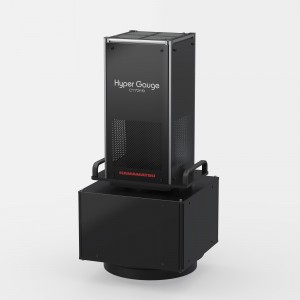
So far there is no standard for the support of special hardware interfaces in embedded vision systems. Most embedded vision applications run on Linux with MIPI cameras and API's such as V4L2, GStreamer and further developments like libCamera. These user interfaces, however, do not provide sufficient support to holistically address problems in the machine vision environment. Even if extensions are provided for example in V4L2, from a user perspective these lead to incompatible solutions across manufacturers. The diversity in the camera hardware interface, camera API and possible extensions leads to the problem that one individual driver must be programmed for each MIPI/SLVS/SLVS-EC/...-camera module that is connected to a SoC. In addition to the programming effort for each driver, maintenance is also incurred over the entire lifetime. This effort is added to the number of MIPI modules offered and multiplied by the number of suppliers on the market - an almost incomprehensible expenditure of programming resources!
Standardization massively reduces programming efforts
A major part of these programming costs could be avoided, though. The machine vision industry has already faced this basic problem in the past and successfully solved it though jointly developing standards, for example in the GenICam standard with the GenAPI and GenTL camera API. Since then, the members of the GenICam working group have been continuously programming, maintaining and expanding the camera API in a cross-company effort for the benefit of the entire machine vision industry. Joint efforts for a generic user interface to the SoC camera interfaces would thus also lead to lower development costs for manufacturers and customers in the embedded area. G3, the global alliance for machine vision standards of all international machine vision associations, has mandated the EMVA's emVISION standardization initiative to develop an industry-compatible standard for embedded vision systems. Already, the emVISION working group includes a number of established machine vision companies, including Adimec, Allied Vision, Alysium, Avaldata, Basler, Baumer, Euresys, Flir, Framos, Matrix Vision, Pleora Technologies and Sony Semiconductor Solutions. Interested companies are invited to join the working group by contacting the hosting association EMVA.
GenTL as starting point for emVISION working group
Meanwhile, emVISION has identified GenTL from the GenICam standard family of as the suitable interface to efficiently integrate cameras in embedded systems. The feature comparison "Hardware-Trigger” in Table 1 illustrates the advantages of GenTL ove V4L2/GStreamer/libCamera:

To summarize, standardization across company and national boarders even amongst market competitors is an integral part of the success of machine vision technology. For both manufacturers and system integrators, a consistent emVISION standard for embedded vision systems can help enormously to save development resources and increase the acceptance of embedded vision especially in industrial environments. Beyond the machine vision industry, the emVISION working group is already collaborating in an exploratory group with a consortium of industry-leading embedded technology companies to develop standards for graphics and computing interoperability.
Written by Werner Feith, EMVA Standards Manager






























 Back to Blog
Back to Blog



























